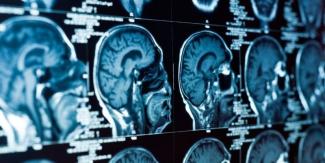
You Are Not Your Imaging Study!
Patients often present to outpatient physical therapy clinics with x-ray/MRI results in hand. Many are simply given their results, or their provider quickly goes over the results in a matter of minutes. Patients are often left confused, concerned and scared of the words they see in the results section of their imaging study. A quick Google search can intensify these feelings of uncertainty and fear.
Without proper medical training or having taken a medical terminology course, many terms used in the imaging report can create fear and panic. Although many of these terms sound scary, they are most often times the result of normal “wear and tear” over time. Common terms and their definitions found in x-ray and MRI reports:
- Degenerative changes: normal “wear and tear” over time. Think grey hair and wrinkles in your joints/spine
- Arthropathy: joint disease
- Osteoarthritis: arthritis
- Central stenosis: narrowing of the canal the spinal cord resides
- Foraminal stenosis: narrowing of the outlets on either side of the spine where nerves exit the spinal column
- Facet arthropathy: arthritis in the facet joints
- Tendinopathy: chronic irritation/inflammation of a tendon
- Osteophyte: bone spur
- Disc desiccation: dehydration of spinal discs
- Bursitis: inflammation of a bursa, fluid filled sacs aimed at reducing friction between muscles/tendons and bone
- Congenital: present since birth
- Osteoporosis: thinning of bone causing bone weakness
- Spondylolisthesis: forward slippage of one vertebra on another
- Arthrodesis: surgical immobilization or fusion of a joint
While most of these terms are scary sounding, many of them are quite normal findings in a large majority of adults. Many times, MRI/x-ray findings are not consistent with clinical findings. In short, Imaging results are not the pain generator and can instead confuse patients and lead to increased stress and anxiety.
Imaging studies are used in conjunction with a clinical examination to determine the cause of a patient’s pain. Typically, a physical examination will give the health provider (MD, PT, etc.) a full picture idea of what is causing patients pain. These findings are used to create a comprehensive rehab approach that is personalized to the individual.
In general, your physical therapist will prescribe exercises to maximize range of motion and strength to improve overall function and ability to participate in one’s preferred activities. Stiff, achy joints and tight muscles typically respond well to frequent mobility. Joint pain can be caused by weakness in surrounding joints. Back pain can be relieved in certain positions and aggravated by others. The only way to know which approach is best for you is to undergo a full physical assessment by your local physical therapist (PT). Instead of
Rather than worry about the results of you MRI/x-ray or spend hours on Google reading scary sounding terms, please reach out to your local Doctor of Physical Therapy. Your PT can explain the results of your imaging study, perform an examination and determine the best course of action to help you get back to doing the things you love. Physical Therapists improve the way you move!
Ryan Hastie, PT, DPT, CSCS
Doctor of Physical Therapy
Certified Strength and Conditioning Specialist
Titleist Performance Institute Medical 2 Certified

